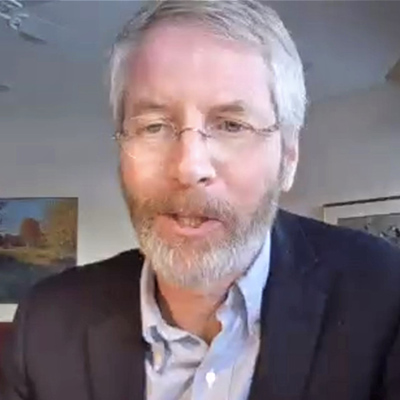
Minnesota regulators last week discussed whether now is the time to allow aggregators of retail customers to bid demand response into wholesale markets.
The Minnesota Public Utilities Commission weighed a decision to lift its 13-year-old ban on the practice at its Aug. 24 meeting (E999/CI-22-600). The commission also considered whether to direct its utilities to develop tariffs to allow third-party aggregators to participate in utility demand response programs, how it might verify or certify aggregators of retail customers for demand response or distributed energy resources before they are permitted to operate, and whether allowing aggregators to operate will require it to establish additional consumer protections.
Minnesota’s regulated utilities said a decision to lift the 2010 ban would be unwise, while commissioners and aggregators said it could move the needle on the sluggish amounts of demand response in the state and leave it better prepared for the clean energy transition.
The commissioners ultimately didn’t vote on removing the ban, instead tabling the docket, though they promised more exploration on demand response going forward.
Otter Tail Power Co.’s Cary Stephenson said he opposes lifting the ban. He said his utility already has made major investments to grow its own successful demand response programs. Stephenson said Otter Tail backs a structure where demand response is treated as a fully regulated program in a utility model.
“In our view, it’s not in the public interest to introduce [aggregators of retail customers] into that structure. … Customer confusion is one of our big concerns [and] cannibalization of the existing DR programs which have worked very well,” he said.
Stephenson predicted “significant administrative costs” associated with utilities coordinating with aggregators.
“Overall … we think there are significant material downsides,” he said.
Stephenson also said it’s premature for the PUC to decide on aggregation before FERC has issued an order in MISO’s Order 2222 compliance plan, which will open its wholesale markets to aggregators of distributed energy resources.
Minnesota Power’s David Moeller said aggregators could erode the state’s legal definition of service territories and the state’s authority to require tariffs. He said he wasn’t sure if the commission had the authority to force regulated utilities to file tariffs for noncustomers to incorporate aggregator participation, which would undercut their own DR offerings.
Xcel Energy’s Ian Dobson said his utility is working to achieve the state’s 2017 directive for Xcel to add 400 MW of additional demand response to its existing, 1,000-MW program. Dobson said to date, Xcel has added a net 170 MW in demand response after it lost some subscribed load.
Xcel Energy’s failure to meet the commission’s 400-MW additional demand response goal set in 2017 sparked the PUC’s discussion on unraveling the aggregator ban.
“We understand, obviously, the reasoning behind wanting to see if aggregators can help as well. … Our concern is just wanting to make sure that however the commission wants to go with this … that it provides the most benefit for our customers,” Dobson said.
Commissioner Matt Schuerger said evidence in recent commission dockets shows Minnesota doesn’t have the robust DR program utility executives described. Schuerger said Xcel repeatedly has missed the mark and could have increased DR capacity by 1,000 MW by now. He said there is “lots available we’re not accessing.”
Schuerger said the 400 MW DR target “was a low bar in 2016.”
Commission Chair Katie Sieben asked whether Xcel is planning to include virtual power plants as a resource when it files its next integrated resource plan in February.
Dobson said he wasn’t sure.
“There’s a degree, I think of frustration, that is bubbling up out of me. We’re in this position — all of the utilities — because Xcel hasn’t quite met the standards that were imposed on the company from the 2017 IRP,” Sieben said. She said maybe the commission’s frustration with Xcel Energy not doing enough on the demand response front should be handled in the utility’s upcoming IRP filing, and not handled by blowing up a prohibition on third-party aggregation that could “seemingly disrupt a lot of apples on the apple cart.”
Dan Lipschultz, representing the Minnesota Rural Electric Association, said commissioners should wait a few years to see whether utilities sufficiently expand their DR offerings. He said if they’re not satisfied, they can always take the more drastic step of rescinding the aggregator ban.
“When we look at the need for and the value of demand response, it’s really important that we don’t use the rearview mirror and use a standard of what was needed 10 or 20 or even five years ago,” Schuerger said. “We’re accelerating this energy transition that we’re in; the Legislature has laid out clear guidance that we’re going to go even faster than the fast pace that we’re already moving.”
Schuerger said advance demand response is not just emergency use or peak shaving and is critical moving forward.
“I’m hopeful that we’ll keep this door open. I think that we’ve got to explore all avenues, all hands on deck, all tools available to get the load flexibility and the demand response that the math is showing us we’re going to need,” he said.
Commissioner Joseph Sullivan said he also viewed demand response as “more than just an emergency resource.” He said DR programs could do more and that there are innovative companies developing products that “quite frankly, utilities haven’t really thought about.” Sullivan said he wasn’t sure that permitting aggregators to operate would be much different from Minnesota’s decades-old decision to allow utilities to source from independent power producers.
“Isn’t this just another entity that can bid into the utility platform so it’s not fundamentally a breach of the compact? It’s just the market has evolved and it’s transforming?” he asked.
Utility representatives said the fundamental difference hinged on that independent power producers enter into power purchase agreements with utilities, and don’t contract directly with customers.
Sullivan said the commission could create a model with tariffs and oversight for third-party aggregators. He also pointed out that aggregators of retail customers in the wholesale market would have to operate under the boundaries of the MISO tariff.
“It’s not a free-for-all. It’s not the Wild, Wild West,” Sullivan said.
Lipschultz said the MISO tariff doesn’t account for Minnesota policies or equality and protecting the public interest.
Jon Wellinghoff, former FERC commissioner and chief regulatory officer at Voltus, testified in favor of lifting the ban. He said it would put pressure on Minnesota utilities and the larger MISO footprint to lower rates.
Wellinghoff said it makes sense the utilities, as competitors in a wholesale market, would try to dissuade commissioners from a repeal to retain their monopolies.
“We’re not talking about retail services. We’re not talking about upsetting the regulatory compact at the retail level. It has nothing to do with that. At all. Nothing whatsoever,” he said. “We’re not talking about a monopoly retail service. We’re talking about competitive wholesale programs.”
Wellinghoff said aggregators behave exactly like merchant generation in the wholesale markets. He also said it’s clear FERC for years has wanted demand response participation in wholesale markets.
Ingrid Bjorklund, speaking on behalf of the Advanced Energy Management Alliance, said the time is right to allow aggregators in the wholesale market.
“So much has changed since 2010, when this issue was last revisited,” she said. “More and more flexible resources are going to be needed as we move towards the clean energy economy and clean energy future, and allowing nonutility aggregators of demand response on both the wholesale and retail levels is really necessary to get there.”
Bjorklund said the administrative costs of allowing aggregators participation are “de minimis” and will be far outweighed by customer savings. She also said the Advanced Energy Management Alliance would support the commission sunsetting the ban at a future date.
Sarah Johnson Phillips, representing several large industrial customers in Minnesota, said mines, mills and factories have been trying for years to convince regulators to undo the 2010 order.


